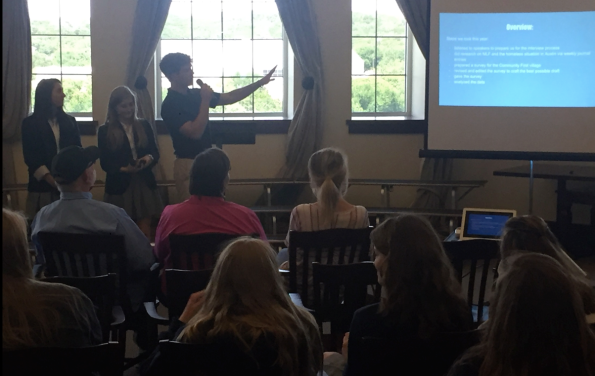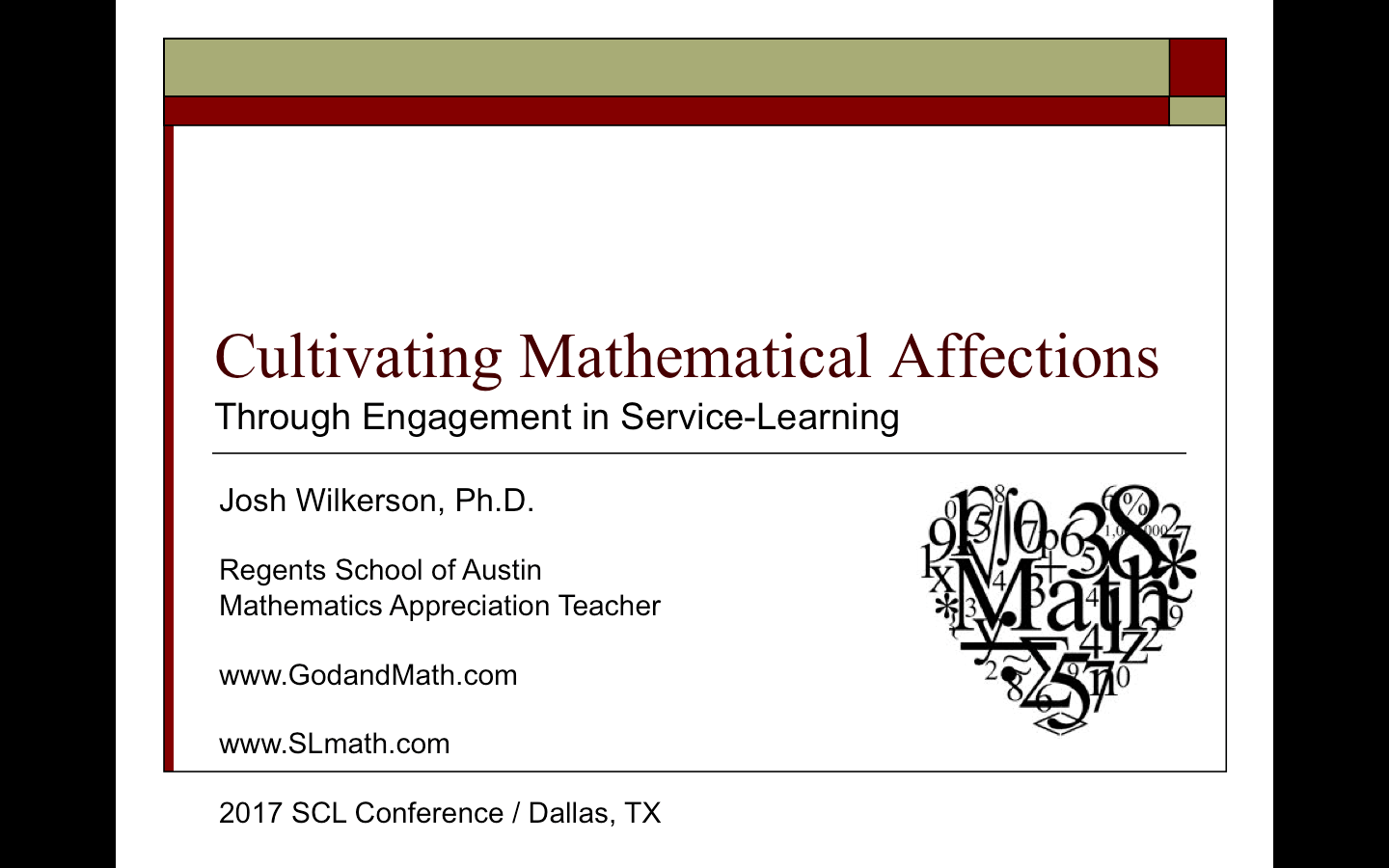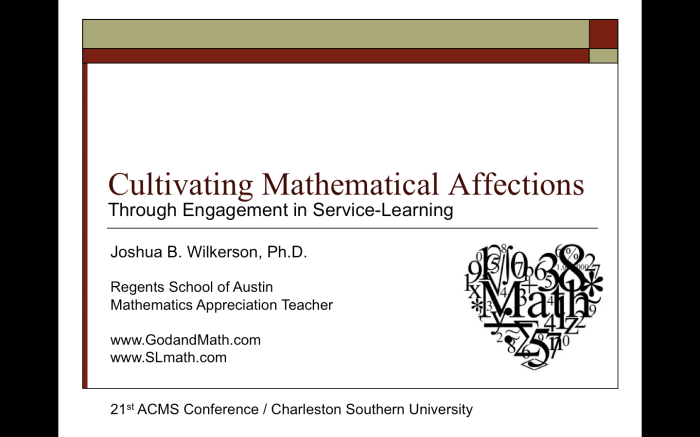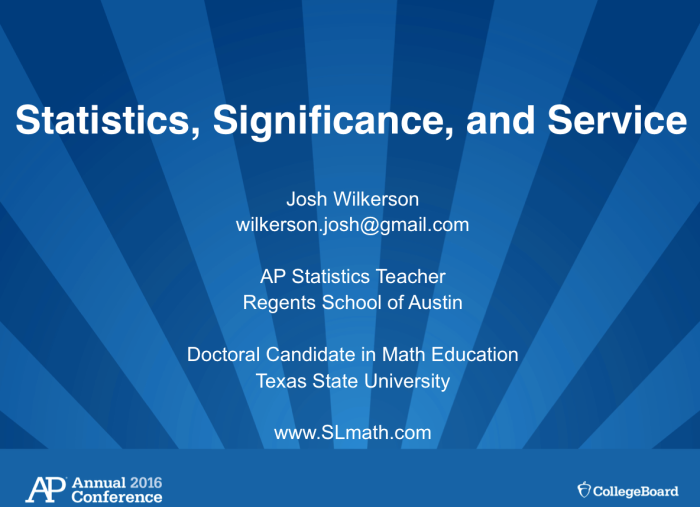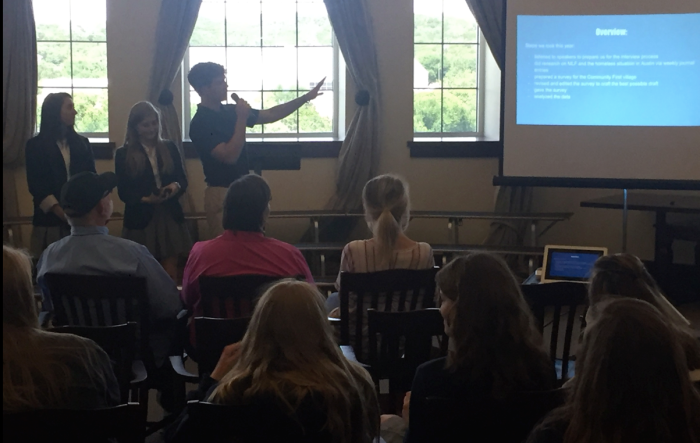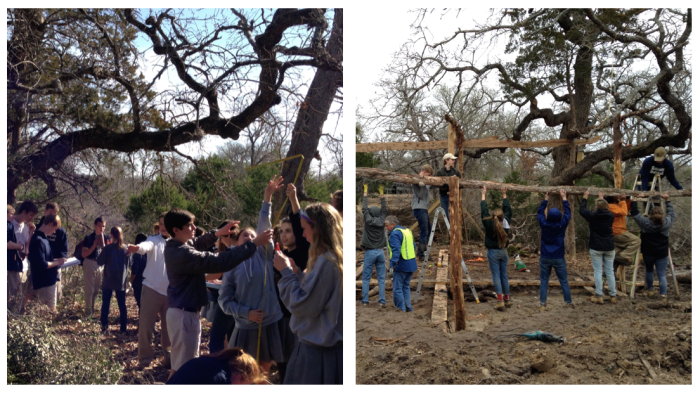AP and the College Board have partnered with WE to bring WE’s internationally recognized service-based learning framework and resources to AP courses, so students can use what they’re learning to tackle real-life social issues and challenges.service-learning to the AP classroom. Microsoft hosted the inaugural AP with WE Service Teacher Summit at their headquarters in Redmond, WA, March 4-5, 2019.
This event was an opportunity for teachers to meet fellow AP teachers, strengthen their implementation of AP with WE Service, learn best practices, and hear from Microsoft staff. A total of 50 teachers were selected to attend.
What follows below is the outline of the presentation I was asked to give at the summit on cultivating student affections through service-learning. I hope to be able to share the video of the presentation soon.

My name is Josh Wilkerson and I teach AP Statistics. I also teach other math courses and as a math teacher there is one big question that I am often asked. You are probably asked it to in your other disciplines, but it is especially prevalent in math. The question usually is accompanied by the student having his kind of expression…
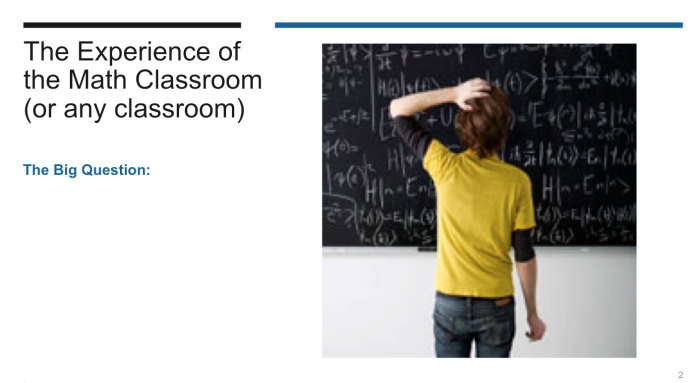
Help me out, what is the big question? (Audience: when am I ever going to use this?)

When am I ever going to use this (said in an exasperated way). It is never “When? When I am going to get to use this!?” (said in an excited way). Rather it is a dismissive question. Since we are at a conference on service-learning you might think you know where this is going. However, I hope to lead you in a slightly different direction. If we are honest with ourselves, how we respond to the student varies based on our mood at the time. In the best of scenarios we can give them a meaningful future application. In other scenarios we respond with how they will need the information for their next course, or more immediately, they’ll need it for the test next Tuesday.
I would like to pose to you that none of those answers are sufficient because, if we are being even more honest with ourselves, we know that the student isn’t really asking a question. The student is making a statement – a statement that they feel validates their disengagement from the lesson. I would also like to pose to you that if you were to translate their statement to an actual question it would be this…
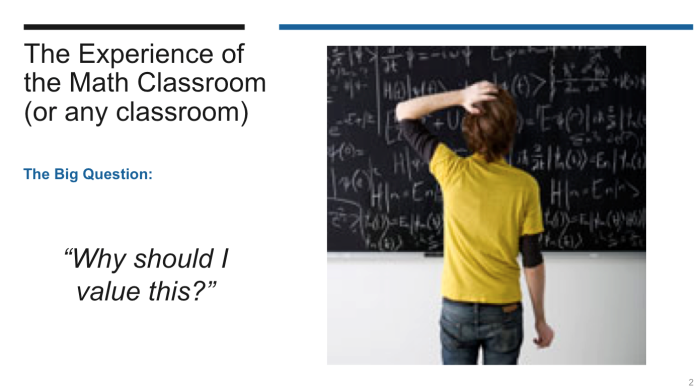
Why should I value this? I would argue that this is the most fundamental question to address in any classroom, even (or especially) mathematics. If we respond to the student’s surface level application question with cognitive information we will always have a disconnect. The student is actually longing for affective formation – however you want to parse that, into motivation or engagement or attitude or something else. The main thing is it is more than just being about what they know.
This is not only true for students. Close your eyes for a minute and imagine a great moment in your teaching career – something where everything was clicking and you were thinking “this is why I got into teaching.” Give me a word or short phrase to describe the mental image you came up with (solicit audience responses).
Notice that none of you told me “pythagorean theorem,” or “Great Gatsby,” or “mitosis.” None of you gave me content. Now, to be sure, the content was still there and was still operating on a high cognitive level I’m sure. My point is to not to dismiss content, but to perhaps reorient us on the primary objective of a classroom.

These aren’t just our feelings. The importance of affect in education has been documented in research.

Not only in research, but also in positional standards. I have here a few in mathematics but I’m sure that you can find something similar for any discipline. So with all this agreement and support, how are we doing?

(Read slide). This quote is from 1992 but it is not dated. I know that it is not dated because, as I mentioned at the beginning, I’m a math teacher. Whenever I introduce myself to anyone and the topic of what I do for a living comes up, these are the number one responses I receive. Math teachers may be second only to priests in the number of confessions they take.
This is what keeps me up at night. This is what I want my classroom to address. How do we do that?

We don’t do it by changing content or even focusing on student beliefs – we do it through rich experiences. The experience of the math classroom needs to change.

THIS is where I think service-learning is powerful. Not as an answer to application, but as an answer to offering rich and meaningful experiences in the math classroom.
How are the affections of the student impacted when we change the experience of math class from this…

To this.

For the past three years my stats students have partnered with a local homeless ministry in Austin for survey research. Here is how they responded to a survey I gave them at the end of the year.





Transition through graphs – point to growth in content knowledge but then also appreciation.
Yes service learning is application – but it is so much more than that. Through service learning we can shift student postures to ones of self-service (when will I use this?) to the service of others. Ultimately their education is not just about them.
Let me close with some words from a student who began the year with a very negative attitude towards mathematics and that improved over the course of the service-learning project. I asked him about it and this is what he said.

(After first bullet) I like this quote because I’m also a realist – I’m not setting out to make everyone always enthusiastic about math. But there are steps we can take and I think this student took them.
Why should I value this? Because it will benefit me and it will benefit others.
Thank you.





